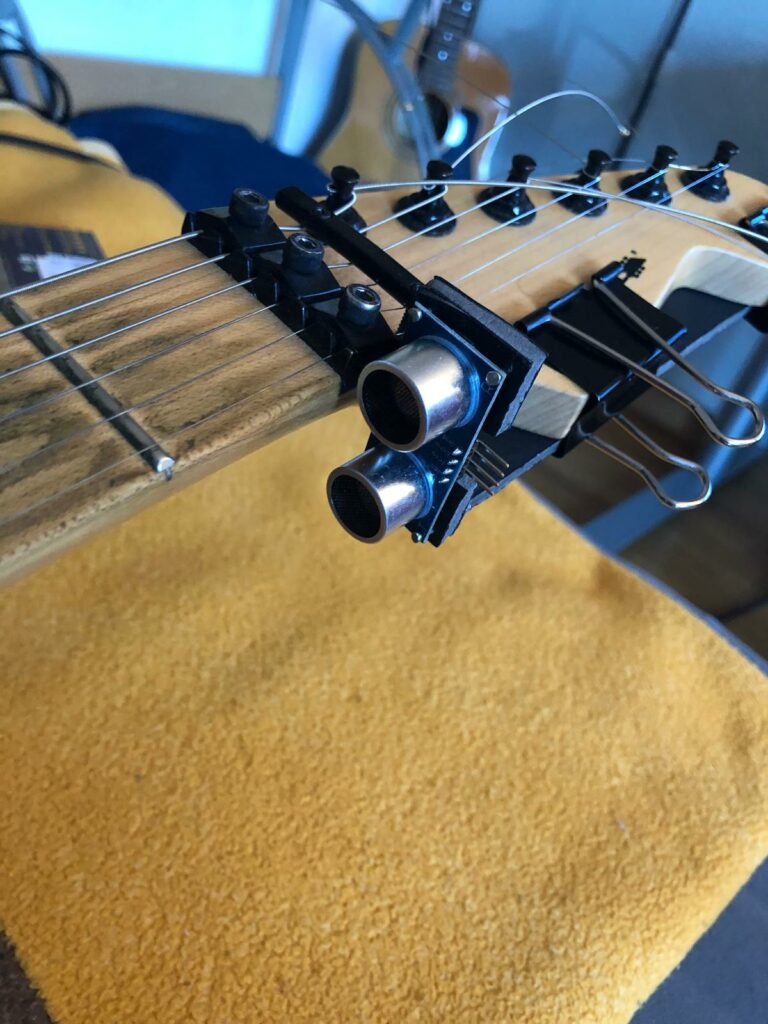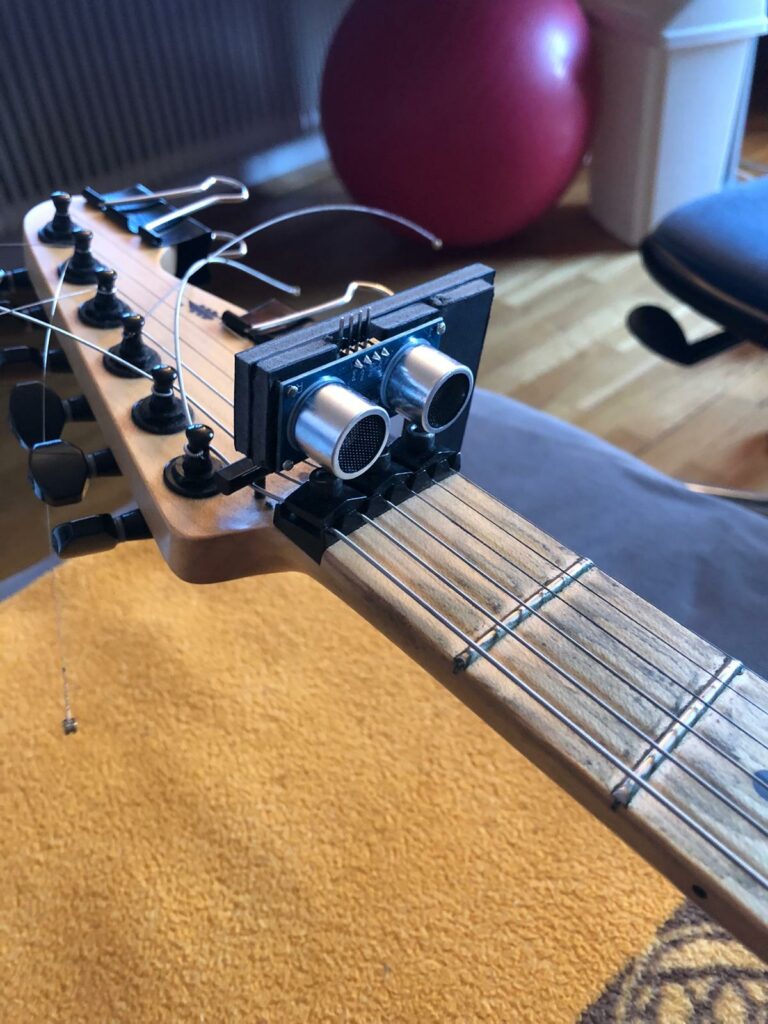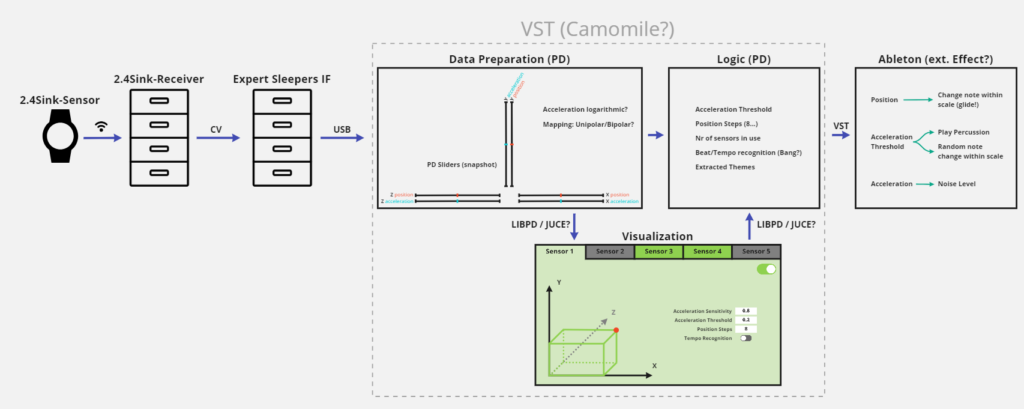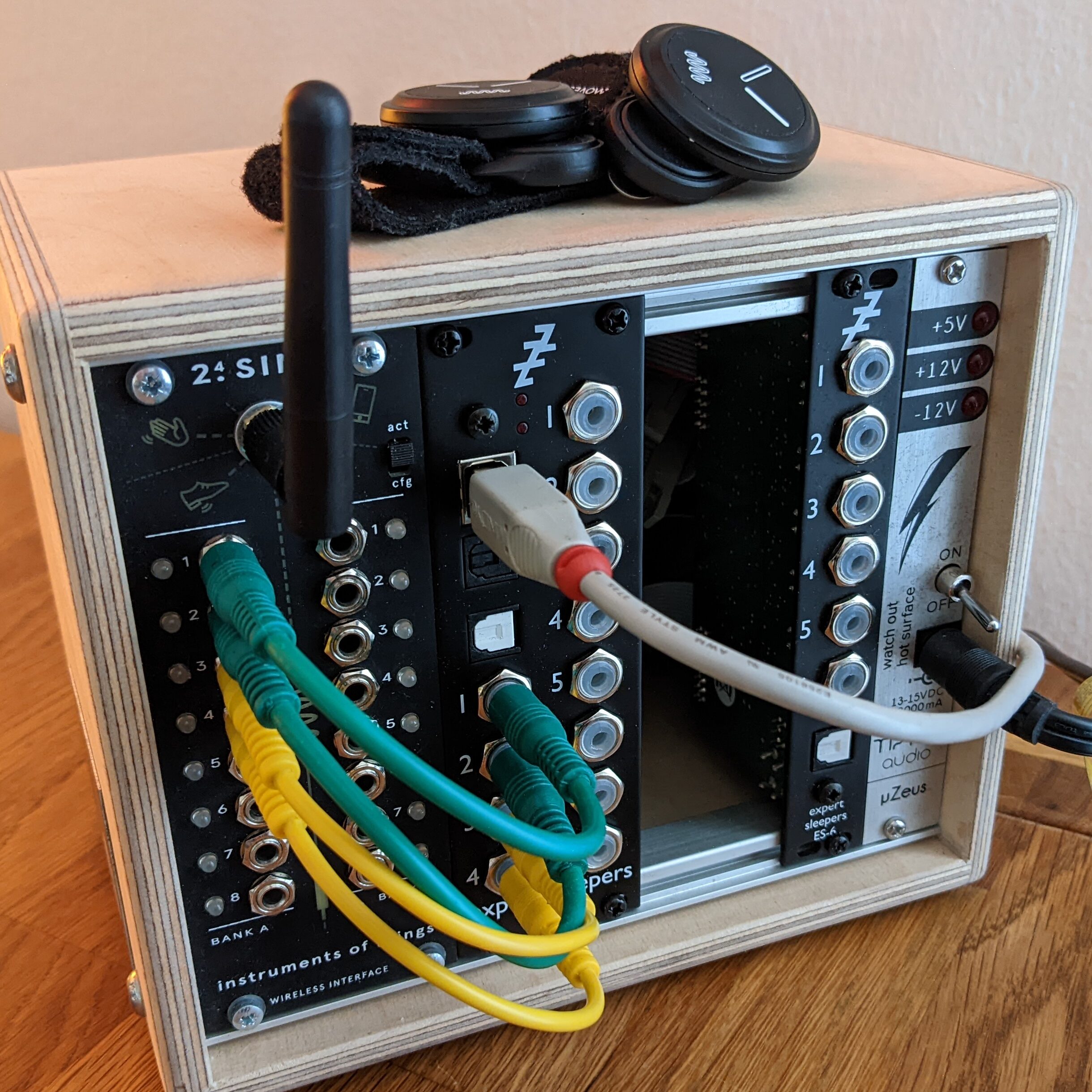The proceedings described in this blog post took place quite some time ago before other projects forced me to put my guitar project on the backburner. I also did not have time to put my advancements into writing – until now. Today is a nice sunny day so I decided to sit on my balcony and write this post which is long due anyway.
Short recap: In my last post I mentioned problems concerning the tackling of finger placing when playing the guitar since Fingers placement on the fretboard is:
- Different according to how the guitar is played. The hand and finger position differs for example when Barre chords are played compared to when single notes/a solo is played.
- Not like a flat surface (which is ideal for the ultrasonic sensor) but instead quite inconsistent and I think that sometime the sensor does not “know” which finger or other part of the hand is the relevant point from which to measure the distance from.
I had the growing concern that the ultra-sonic sensor is not the right tool to pinpoint the location of the fretting hand along the neck and after consulting with my project supervisor we decided to try our luck with a so-called time-of-flight (or ToF) sensor that measures distance using light not ultra-sonic sound. My supervisor recommended me several types but and I started comparing their specs.
But first of all, what are “time-of-flight” sensors? According to a trusty and very helpful blog called “Wolles Elektronikkiste”, these kinds of sensor work (as the name suggests) with the time-of-flight (ToF) principle. They emit light rays and measure the distance according to time passed until the reflected rays reach the sensor again. This makes them very similar to the ultra-sonic sensor, but they work optically. The rays I mentioned are in fact infrared (IR) rays emitted from a Vertical Cavity Surface-Emitting Laser (VCSEL) which features a wavelength of 940 nanometers (nm) – a wavelength outside the spectrum of visible light. Furthermore, the sensors use so-called Single Photon Avalanche Diodes (SPADs) (this detail will become more useful down the (blog) road).
On my quest to find the ideal ToF sensor, I looked more closely at the VL6180X, the VL53L0X and the very similar VL53L1X.
A quick search verified that the VL6180X is unsuitable for my project because of its limited range of 20 cm. As mentioned in one of my previous blog posts, I am working with a Charvel guitar whose scale length is 64,8 cm with the neck measuring approximately 40 cm so consequently, 20 cm of range is too short.
The next choice between the VL53L0X and the VL53L1X proved to be more difficult, and I have not reached a final decision yet. Again “Wolles Elektronikkiste” provided me with a useful blog comparing these two sensors. They have a lot in common as far as voltage range and pinouts are concerned and the communication is via I2C for both sensors. The article describes the range as the most obvious difference between the VL53L0X and VL53L1X with the first reaching two meters and the latter up to four meters. These two ranges are both more than enough for my applications, so I still had no obvious favorite.
I will insert a cliff hanger here to keep the suspense alive: Which sensor will I choose? Read my next blog to find it out!
Sources:
VL53L0X and VL53L1X – ToF distance sensors • Wolles Elektronikkiste (wolles-elektronikkiste.de)







